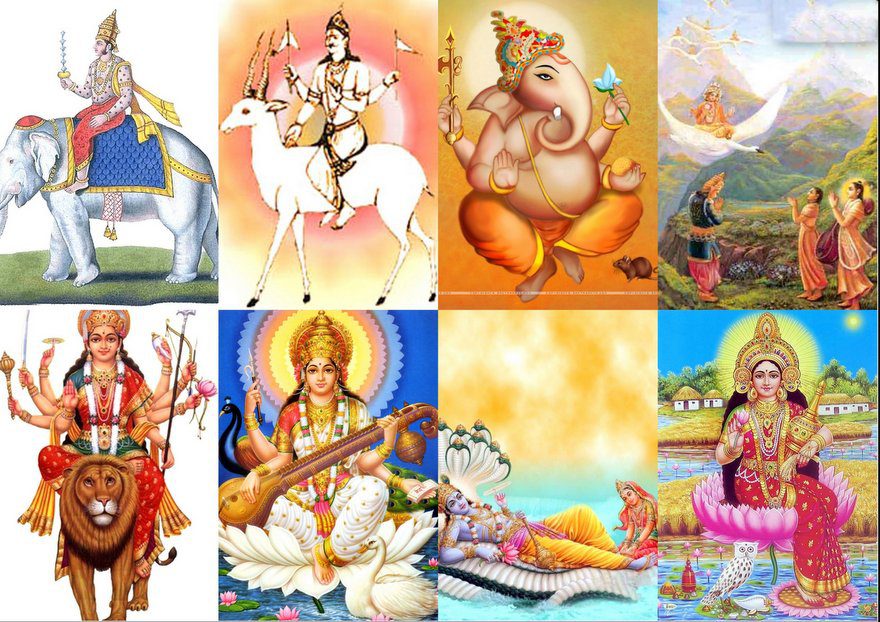The deities of Hinduism are revered by millions and each one of them has unique attributes and characteristics. But beyond their revered personas and divine deeds lies another fascinating attribute that adds depth to their narratives- their vaahanas or their sacred vehicles.
Just like we humans rely on various modes of transportation for our journey on land, these deities also require special vehicles that carry them across the cosmos. These vaahanas are not just modes of transportation but symbolic embodiments of the deities’ attributes and qualities. These vaahanas provide deeper insights into the various beliefs of Hinduism. Let us take a look at the sacred vehicles or vaahanas of some of the main deities of Hinduism and their significance:
Top 10 Vahanas of Hindu Deities –
Nandi- Vahana of Lord Shiva
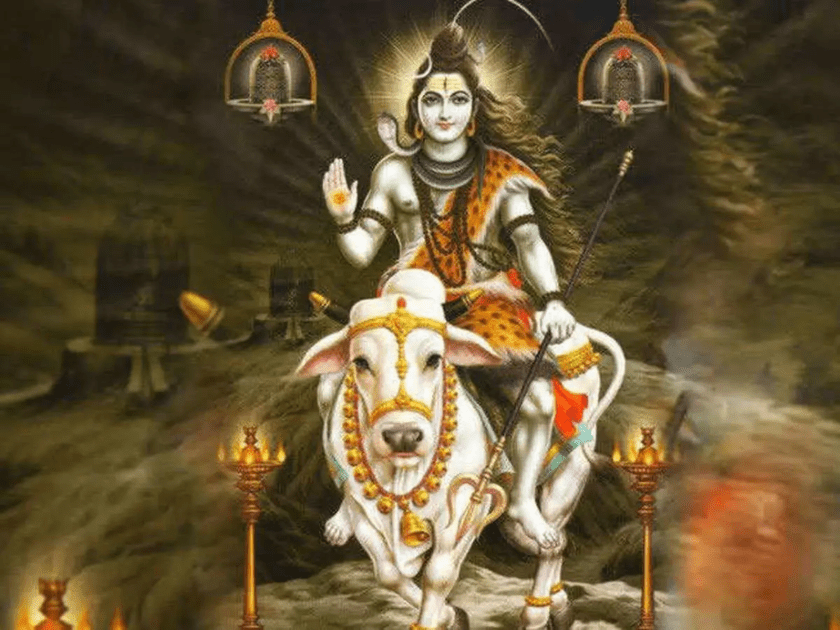
Also known as Nandikeshvara or Nandideva, is the vaahana of Lord Shiva. He is also the guardian deity of Kailash, the abode of Shiva. Nandi is described as the son of sage Shilada. Shilada underwent rigorous penance to have a boon- a child with immortality and the blessings of Lord Shiva and received Nandi as a son. Nandi grew up to be an ardent devotee of Lord Shiva and performed severe penance to be his gatekeeper as well as his mount. In his mount form, Nandi is depicted seated in all Shiva temples, all over the world. The white color of the bull symbolizes purity and justice. Symbolically, the seated Nandi faces the sanctum in Shiva temples and represents an individual soul, and signifies that a soul should always be focused on the Parameshwara.
Garuda- the Vahana of Lord Vishnu

Garuda is a Hindu deity primarily depicted as the mount of the Hindu God Vishnu. He is the son of sage Kashyapa and Vinata. In Hinduism, Garuda is shown as a divine eagle-like sun bird and the king of birds. In the bird form, garuda is shown with wings slightly open as if ready to fly wherever he needs to. His eagle-like form is shown either alone or with Lord Vishnu. This divine creature is mentioned in the Hindu, Buddhist, and Jain faiths. Garuda is generally portrayed as a protector with the power to swiftly travel anywhere and the enemy of every serpent.
Hamsa- the Vahana of Goddess Saraswati

Hamsa or White swan is the vaahana of Goddess Saraswati- the Goddess of art and learning. Hamsa is considered to have the quality to separate milk from a mixture of milk and water. Here the swan’s power to make fine distinctions is symbolically used- creative power, knowledge, inner realization, and outer glorification of the Lord are all products of Hamsa’s discriminative power.
Peacock- the Vahana of the Hindu God Kartikeya ( Murugan )
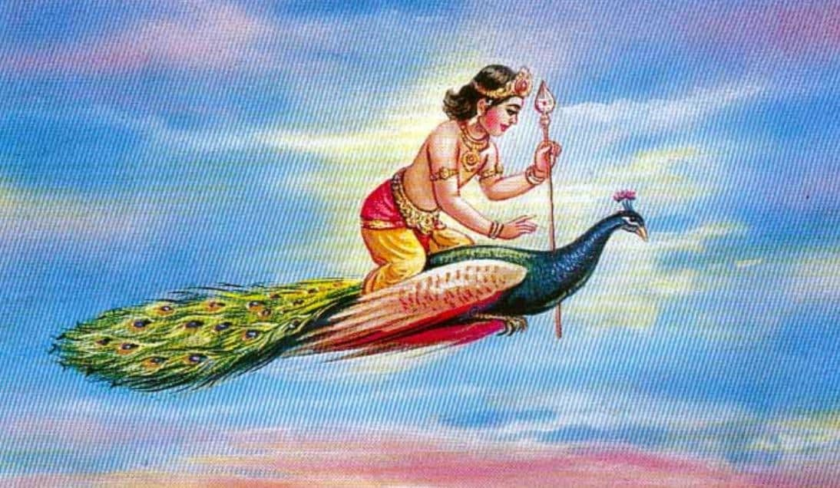
Peacock is the mount of Lord Kartikeya- the Hindu God of War. The blue color of the peacock represents infinity. Peacock is known for its excessive pride- which is symbolically represented here as the pride that a seeker of truth should have for the supreme self. In most images of Muruga, the peacock is shown clutching a serpent with its claws. The serpent represents ego and fleeting pleasures. The peacock keeps the serpent under control indicating that one must enjoy worldly pleasures but avoid over-indulgence.
Mouse- the Vahana of Lord Ganesha
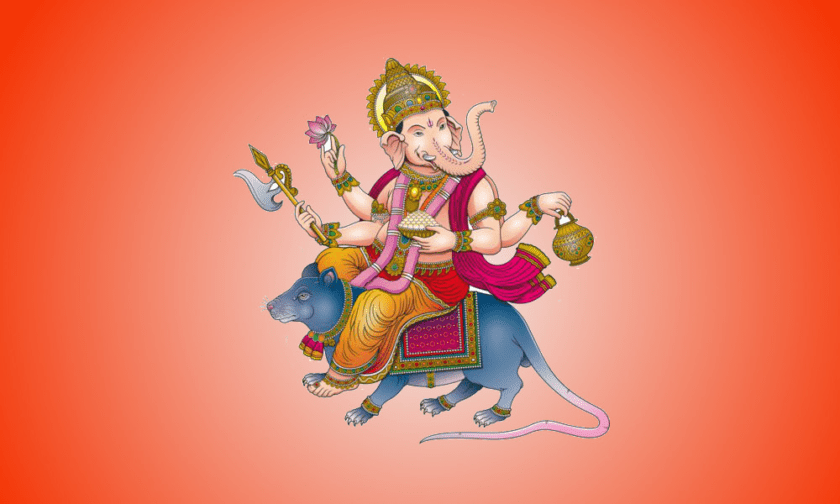
The Mouse is the vehicle of Lord Ganesha- the Hindu God of new beginnings and the remover of obstacles. In written sources, the mouse as the divine vehicle first appeared in Matsya Purana. As the chosen vehicle of Lord Ganesha, the mouse represents the need to let go of material temptations. Even a small mouse can be the instrument of divine will- this is the message that the small mouse conveys to the devotees.
Owl – the Vahana of Goddess Lakshmi
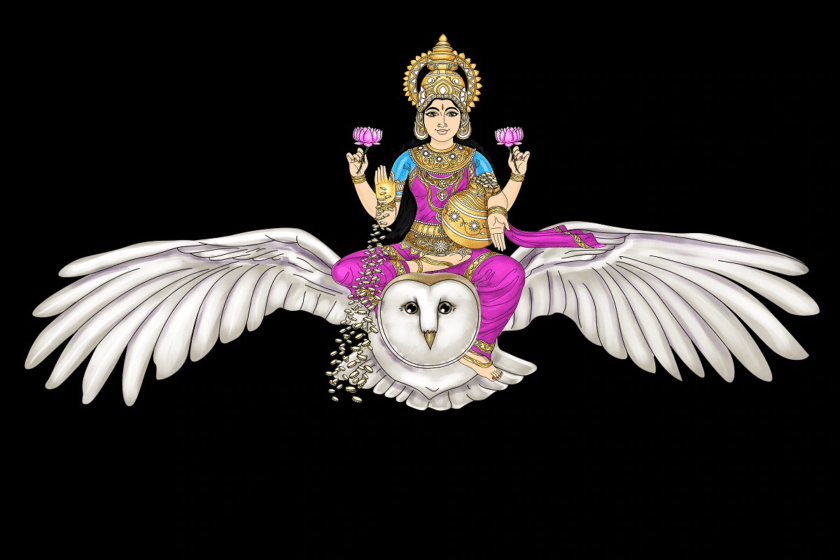
The owl represents intelligence, foresight, and the capacity to navigate challenging times. The owl is the vaahana of the Hindu Goddess Lakshmi- the goddess of wealth, prosperity, and abundance in the HIndu mythology. The owl as the vaahana of Goddess Lakshmi symbolizes the need for prudence and wise decision-making in matters of wealth.
Lion – the Vahana of Goddess Durga

The mighty Lion is the vaahana of Goddess Durga –the fierce and invincible deity that fights evil forces and restores order in Hindu mythology. The Lion is the symbol of uncontrolled tendencies like anger, arrogance, greed and the Goddess sitting on top of it reminds us to control these qualities. Mother Durga riding a Lion also symbolizes power, willpower, and determination.
Bull ( Vrishabha) – the Vahana of Lord Yama

The Bull is the vaahana of Lord Yama- the God of death and justice in Hindu mythology. The bull is the symbol of the relentless nature of time and the inevitability of death, reminding mortals of the impermanence of life. As the vehicle of Yama, the bull also signifies the divine aspect of justice- ensuring that all beings are held accountable for their actions in life. The bull also serves as the guardian, guiding souls to the afterlife with kindness.
The divine elephant( Airavata)- Vahana of Lord Indra

The Elephant is the divine vehicle of Indra –the Hindu God of thunder and rain. Airavata is the divine elephant characterized by four tusks, seven trunks, and a white complexion. Airavata, with its immense strength, symbolizes the potency of nature’s forces echoing the thunderous sounds of the clouds under Lord Indra’s command.
Ram( Goat)- the Vahana of The God of fire, Agni

Agni, the God of fire, is an important deity of Hinduism. Ram( Goat) serves as the vehicle of Lord Agni. The Ram is symbolic of strength, energy, and power.
FAQ –
1. List some lesser-known vaahanas and their deities.
Vayu, the wind God, is depicted riding a deer. Lord Bhairava has a dog as his mount. Kama and his wife, Rati, have the parrot as their mount.
2. What is the deeper symbolism behind the vaahanas?
The vaahanas have a deeper symbolism. They denote the elements over which the Gods have control. The vaahanas represent the power and the Lordship of the deity over the forces of nature.
3. What or who is a vaahana?
A vaahana is typically an animal or mythical entity that a particular Hindu God is said to use as a vehicle. So the vaahana is often called the deity’s mount.
4. What is the unique quality of these vaahanas?
The vaahanas of Hindu Gods are not mere animals or beasts of burden but divine beings that possess divine wisdom and assume fierce forms on the battlefield. Most of them are treated with respect and worshipped by devotees with offerings of food and prayers.

